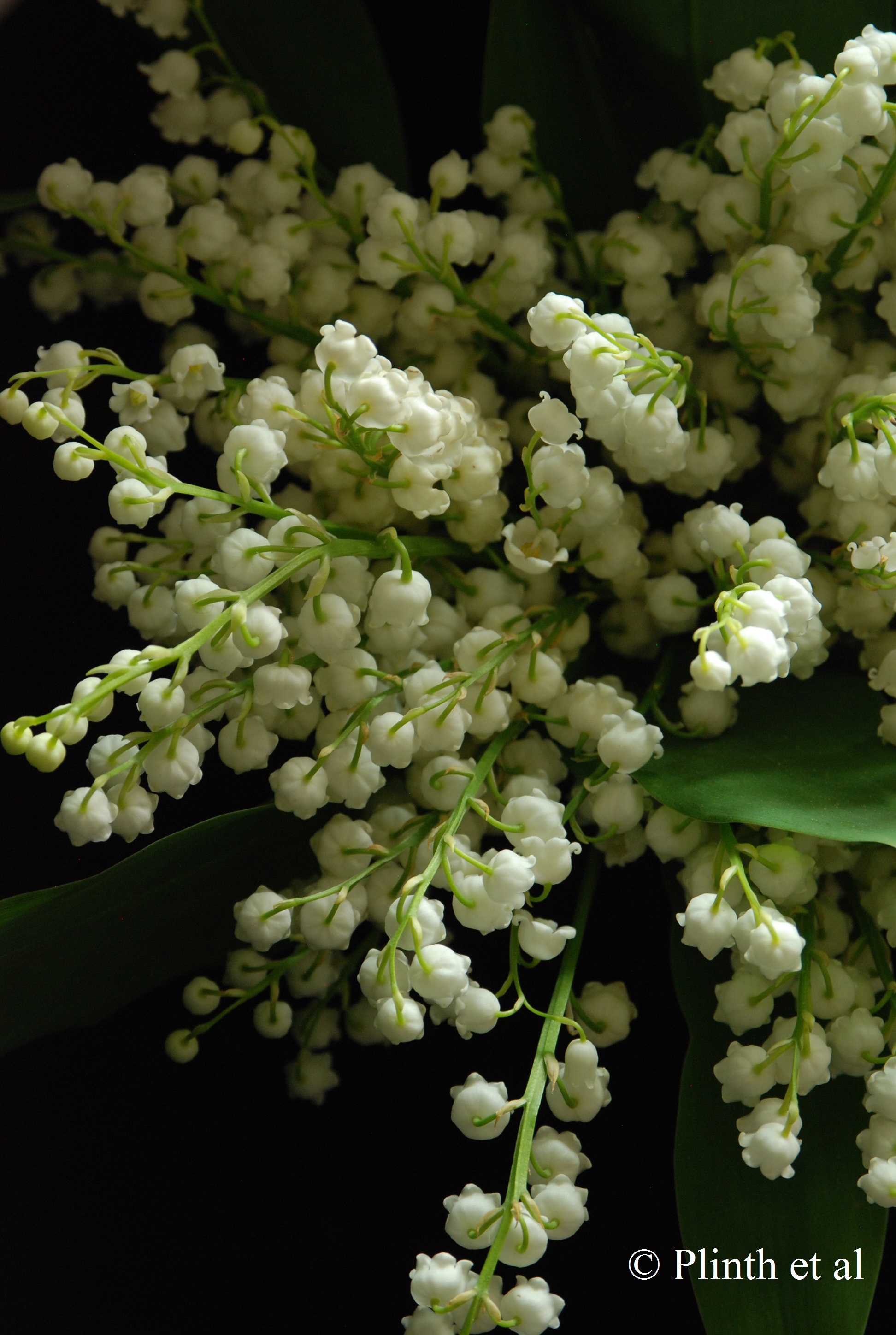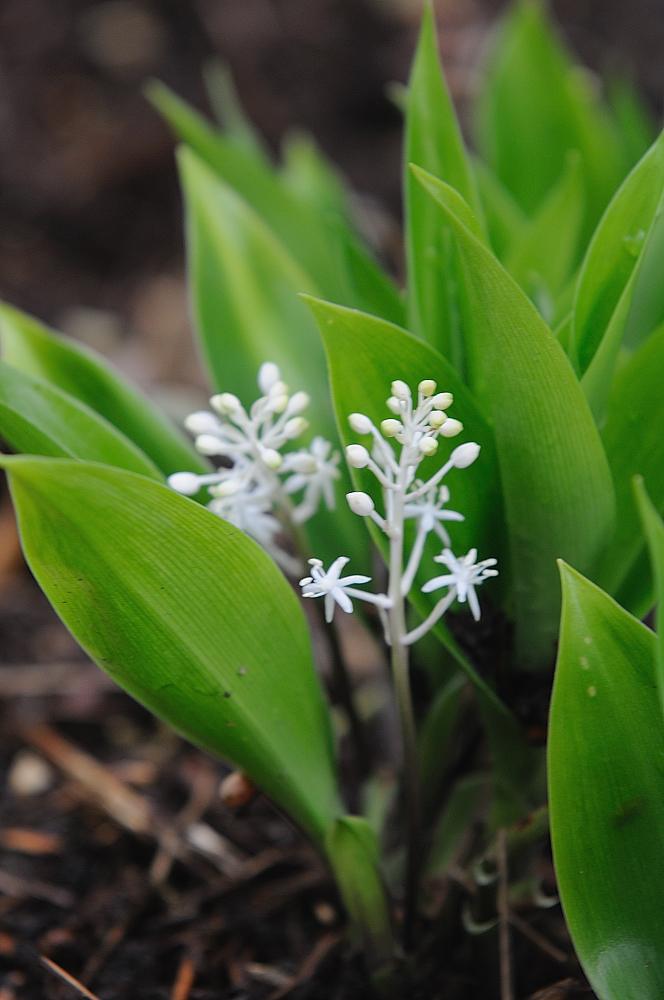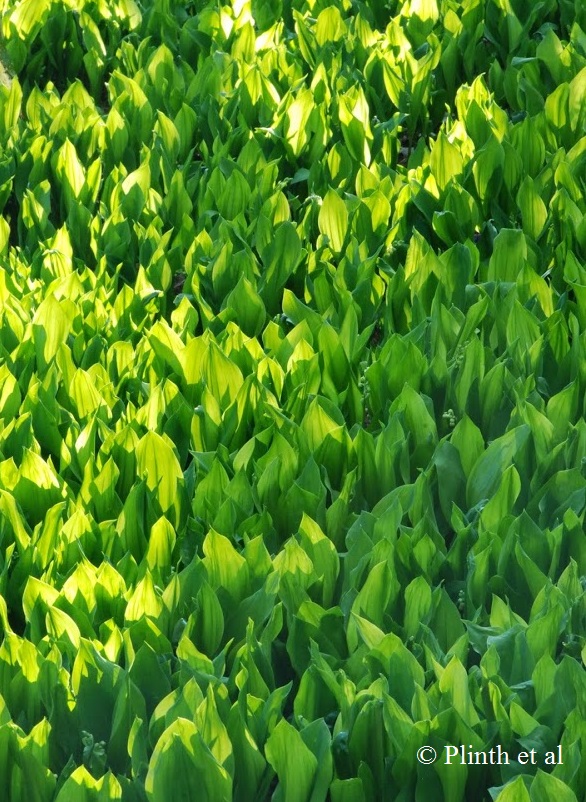Plantsman's Corner: Convallaria majalis
In the second of the series Plantsman Corner, Philippe Lévesque reflects on the lily of the valley, its cultivation, and its varieties.
'Sweetest of the flowers a-blooming, in the fragrant vernal days, is the lily of the valley with its soft, retiring ways'
The words of Paul Lawrence Dunbar resonate now as they have done for people for a century. It might be because of its humble stature and coy nature that lily-of-the-valley is seen as a symbol of purity. Virgin Mary's tears shed on the cross transformed into the lily-of-the-valley's white cupped flowers. Apollo was said to carpet the ground with lily-of-the-valley for his nine muses to walk, gracing their steps with its scent. Many a bride, including the royal brides Grace Kelly and Kate Middleton, buried their noses in bouquets of lily-of-the-valley. But if lily-of-the-valley did originate from Greece, it has long deserted the defied grounds for gentler, moister forests of the temperate regions. Traveling far and wide, the plant is now found as a wild flower in Europe, North America and Asia. And everywhere it is found, it has captured the heart of people through their nose! Its potent fragrance is its best feature, and one of the most evocative.
In botanical circles, Convallaria majalis is considered a member of the lily family, or more specifically the Asparagaceae (previously put in its own family Convallariaceae). It is a parent of Solomon Seal (Polygonatum and Maianthemum), but surprisingly shares kinship with asparagus, dracaenas, and sansevierias. Its closest ally is probably a little-known Chinese plant, Speirantha convallarioides (syn. S. gardenii). Often called false lily-of-the-valley, it has similar foliage, the same strong fragrance but starry flowers like a Maianthemum. Rare in cultivation it is occasionally available from specialist nurseries. It is not as resilient to the cold as Convallaria, having semi-persistent foliage but is worth a try even in cold climates where snow is reliable.
As far as gardeners are concerned, lily-of-the-valley is a plant that divides opinions. It is beloved not only for its beauty, but for its tenacity. In The English Rock Garden, Reginald Farrer wrote: "Lily of the Valley is the worst of all delicious weeds where it thrives." One of the toughest garden plants, the lily-of-the-valley can grow just about anywhere except in water. It will proliferate in dry deep shade (although flowering will be compromised). However, what some see as a blessing is a curse for others. It is un-tamable and the novice has to learn the lesson firsthand. For the first few years, plants seem weak and then suddenly and insidiously explode everywhere. Summoned by people to rid their gardens of the lily-of-the-valley, we have dug up and transplanted more plants than we care to remember. Relocated under birches and conifers where little else would grow, the lily-of-the-valley now forms a sea of green. It receives nothing more than a meagre spread of mature every two years.
In nature, lily-of-the-valley is a bio-indicator of ancient woodlands where intense root competition does not deter it. Each individual plantlet, called a pip, will colonize tough areas in time if well-watered and fertilized. The trick to successful transplanting in inhospitable places is to water and feed it well for the first two years before leaving the plants to their own devices. The ground is best left uncultivated during planting. We just put a layer of soil/manure mix on the ground, spread the pips, and then cover them up with more soil and mulch of shredded leaves. This method works just fine, saving you the back-breaking work.
There are interesting variants of the lily-of-the-valley. A pink form 'Rosea', is not a clean vibrant colour, but not without its charms. Seemingly more fragile in appearance, it is equally resilient, despite not forming as a dense a ground cover. We have left a clump to roam for a decade in a grove of sugar maples before, and although it fought its ground superbly, its naturally long rhizomes sent it far and away, leaving large gaps unfilled. It is best to grow 'Rosea' interspersed with other woodlanders such as Anemone nemorosa, Hylomecon japonica or Cardamine pentaphylla, all valiant at competing with tree roots. We received our pink-flowered plants as Convallaria transcaucasica and have been selling them as such since we cannot ascertain their true identity. Authorities disagree over whether 'Rosea' is just a variant of C. majalis or a separate species. It seems different from C. majalis with its narrow, bluish, and thin leaves and long undivided rhizomes.
Another botanical conundrum is Convallaria keiskei, the Asian lily-of-the-valley, or, as some botanists insist, only a large variant of C. majalis. We have limited experience with this plant, but were promised a lily-of-the-valley double the size of the usual one. Such size would be nice for bouquets because the species makes a rather unimpressive posy. In the cut flower trade, a particularly vigorous form, 'Géant de Fortin' is usually gown. We acquired another large pretender under the name of 'Bordeaux' a couple of years ago but so far, it hasn't impressed us. It could do once it really settles down. The one cultivar that does excite us with its vigour is 'Hardwick Hall', a variegated form having a delicate cream edge to its wide leaves. It is surprisingly strong growing, and so far, not in the least invasive, growing in a dense clump after a decade in the ground. It could just be a coincidence, although other people have said the same thing. A well-behaved lily-of-the-valley, now, that's precious!
We recently tried a couple of other variegated sports similar to 'Hardwick Hall'. 'Hofheim' is very similar with its variegation perhaps a little brighter, whilst 'Haldon Grange' has a wider cream brim, like brushstrokes, less defined but very nice indeed. These cultivars are subtle in comparison to the most striking 'veined' sorts. 'Albostriata' (syn. 'Variegata') is a beautiful plant with a variegations alongside the leaf veins. It is unfortunately slow-growing and unstable as shoots vary in intensity, sometimes coming up completely green. By contrast, the arrestingly intense 'Vic Pawlowski's Gold' is more stable, reverting occasionally but slower in growth. A special mention has to be made of the bizarre form 'Gérard Debureaux' also known in English-speaking countries as 'Green Tapestry'. It excites people with its streaked and splashed leaves, yet it looks like a beautifully virused plant! We haven't grown it, but read that it is vigorous, so perhaps it's not afflicted by viruses at all, just a freak variegation. Less dramatic is the sport found in Luxembourg and named after a Dutch town, 'Landgraaf'. Golden-leafed forms exist as well. Infrequently available and expensive is 'Fernwood's Golden Slippers' discovered by Maine nurseryman Rick Sawyer. Similar to 'Fernwood's Golden Slippers' are 'Aurea' and 'Golden Jubilee', both European introductions. They are all suitably vigorous considering how pale they are.
In terms of flowers, we have already mentioned the pink one, but we haven't touched on the double forms. Two different plants appear under that definition. The first, 'Flore Pleno' is the nicest with double flowers, subtle, with a hint of pink. It is rare and what is often sold under that name is the common 'Prolificans', a different plant altogether with clusters of tiny cream bells along the stem instead of single double flowers. Although the flowers can look messy in the garden, they do make a lovely posy.
There is so much one could say about lily-of-the-valley; information abound about this demure little flower. The Danish would tell you proudly that it is their national flower, the French would inform you that it is a harbinger of happiness for them, whilst the Germans would no doubt link it to their goddess Ostara. Whatever the significance of lily-of-the-valley might be, what is quite certain that it does not leave anyone indifferent!









